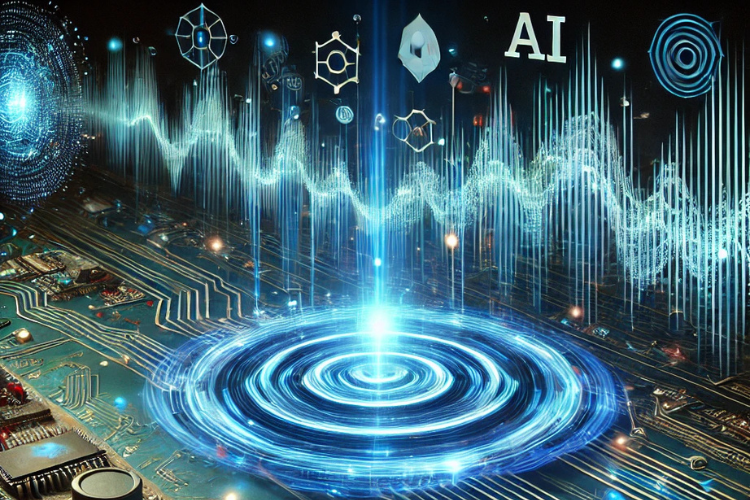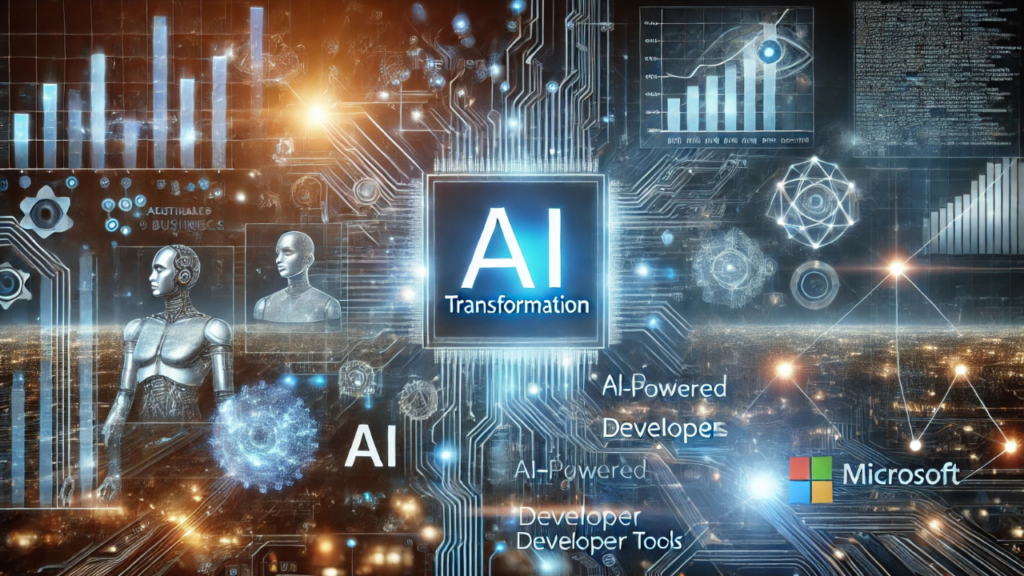Introduction
Microsoft has just made a bold move in the AI space. Satya Nadella and his leadership team have restructured their AI division, signaling a major shift in strategy. This move is more than just corporate reshuffling—it shows Microsoft’s commitment to making AI the core of its future.
For developers, entrepreneurs, and businesses, this change will have a lasting impact. Understanding these shifts will help you stay ahead in the evolving tech landscape. Let’s break down what’s happening, why it matters, and how it could reshape the AI industry.
1. The CoreAI Team Reorg: A Strategic Reset
Microsoft has made significant changes to its CoreAI team, which is responsible for foundational AI research and development. This restructuring hints at a fresh strategic direction for the tech giant.
Key Changes in CoreAI
- Several top AI executives are shifting roles.
- The CoreAI team is getting a complete overhaul.
- The focus appears to be on aligning AI research more closely with business needs.
- Enhanced collaboration with product teams to drive innovation faster.
Why This Matters
Microsoft’s AI ambitions are no secret. They have invested heavily in AI-driven tools, cloud services, and their partnership with OpenAI. By reorganizing the CoreAI team, they are setting the stage for a more streamlined and efficient AI development process.
This move suggests that Microsoft wants to accelerate AI advancements and integrate them more seamlessly into its products. For developers, this could mean new opportunities and tools designed to enhance AI-powered applications.
Additionally, this realignment indicates a focus on ethical AI development. As AI becomes more powerful, ensuring fairness, transparency, and accountability will be critical. Microsoft’s restructuring could lead to more robust AI governance and responsible AI initiatives.
2. AI Engineering Powerhouse: The Rise of a New Leadership
Microsoft is not just restructuring—they are also bringing in fresh leadership to drive AI innovation. The biggest news is the appointment of Jay Parikh, a former Facebook VP, to lead the new AI Engineering group.
Who Is Jay Parikh?
- Former Vice President at Facebook.
- Expert in scaling AI and machine learning teams.
- Known for driving innovation in cloud computing and AI infrastructure.
- Has a track record of leading large engineering teams through transformative growth.
Microsoft’s AI Engineering Vision
With Parikh at the helm, Microsoft aims to build an AI engineering powerhouse. This move consolidates AI talent, streamlines workflows, and maximizes efficiency.
The creation of a dedicated AI Engineering group indicates that Microsoft is doubling down on AI as a fundamental pillar of its future. Expect to see more AI-driven products, services, and features in the coming years.
Furthermore, this new division will likely focus on enhancing AI infrastructure, making it easier for businesses to integrate AI into their operations. Developers working with Microsoft’s AI ecosystem will benefit from improved tools, libraries, and APIs that facilitate seamless AI deployment.
3. Microsoft’s AI Vision: What’s Changing?
Microsoft’s AI strategy has always been ambitious, but these recent changes mark a shift toward greater AI integration across all its services.
Key Strategic Moves
- Stronger collaboration between AI research and product development.
- Enhanced AI tools for Azure and cloud computing.
- Continued partnership with OpenAI to push boundaries in AI technology.
- Expansion of AI-driven applications in Microsoft 365, Dynamics, and Bing.
What This Means for Developers
For software developers and AI engineers, Microsoft’s new approach could mean access to better AI frameworks, cloud-based AI services, and integration tools that make AI development easier.
Businesses leveraging Microsoft AI products should also prepare for more advanced AI-driven features that improve automation, efficiency, and decision-making.
Moreover, AI ethics and regulatory compliance will be a growing focus. As AI adoption increases, ensuring data privacy and unbiased decision-making will be paramount. Microsoft’s AI vision will likely include robust measures to address these concerns.
4. The Ripple Effect: How This Impacts the Tech Industry
Microsoft’s AI overhaul will have ripple effects across the tech industry. Competitors, partners, and startups alike will feel the impact.

Potential Industry Shifts
- Increased Competition: Google, Amazon, and other tech giants may accelerate their AI investments.
- New AI Job Market Trends: AI specialists, data scientists, and cloud engineers will be in higher demand.
- More AI-Driven Tools: Businesses will gain access to AI-powered software with enhanced automation and analytics.
- Startups Will Need to Adapt: AI-driven businesses must refine their strategies to stay competitive.
- Greater Emphasis on AI Ethics: As AI capabilities grow, so will the demand for transparent and responsible AI use.
For startups and enterprises, these changes present both challenges and opportunities. Companies that adapt quickly will benefit from AI-driven innovation, while those slow to react may struggle to keep up.
Additionally, Microsoft’s AI push could redefine workplace productivity. With AI-powered automation tools becoming more sophisticated, businesses can optimize operations and enhance workforce efficiency. This shift could lead to reduced costs, improved customer experiences, and faster product development cycles.
Conclusion
Microsoft’s AI shakeup is a game-changer. The restructuring of the CoreAI team and the appointment of Jay Parikh to lead AI Engineering signal a bold new direction. AI is no longer just a side project for Microsoft—it is the future of their business.
For developers and businesses, this means more AI tools, faster innovation, and a changing job market. Keeping an eye on Microsoft’s next moves will be crucial for anyone working with AI.
As these changes unfold, platforms like StartupHakk will continue to analyze industry shifts and provide insights on how AI is shaping the future. Stay tuned for more updates on how Microsoft’s AI strategy is evolving.
Whether you’re a developer looking to build AI applications or a business leader exploring AI integration, now is the time to understand and adapt to Microsoft’s new AI-driven era.




